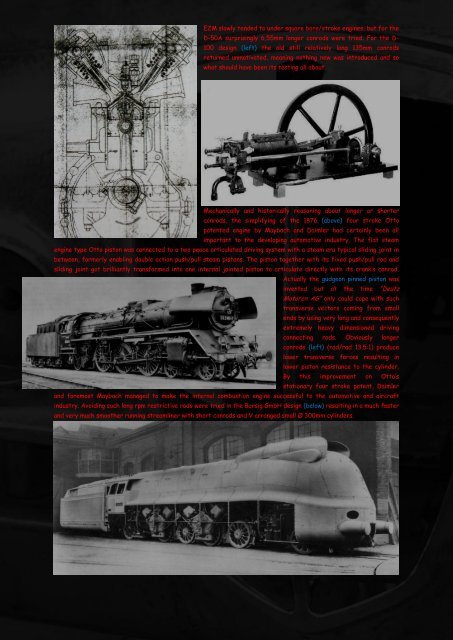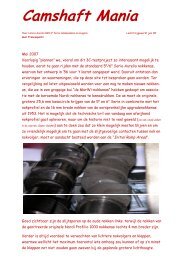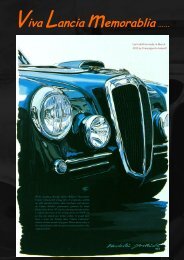You also want an ePaper? Increase the reach of your titles
YUMPU automatically turns print PDFs into web optimized ePapers that Google loves.
EZM slowly tended to under square bore/stroke engines, but for the<br />
D-50A surprisingly 6,55mm longer conrods were tried. For the D-<br />
100 design (left) the old still relatively long 135mm conrods<br />
returned unmotivated, meaning nothing new was introduced and so<br />
what should have been its testing all about.<br />
Mechanically and historically reasoning about longer or shorter<br />
conrods, the simplifying of the 1876 (above) four stroke Otto<br />
patented engine by Maybach and Daimler had certainly been all<br />
important to the developing automotive industry. The flat steam<br />
engine type Otto piston was connected to a two peace articulated driving system with a steam era typical sliding joint in<br />
between, formerly enabling double action push/pull steam pistons. The piston together with its fixed push/pull rod and<br />
sliding joint got brilliantly transformed into one internal jointed piston to articulate directly with its crank‟s conrod.<br />
Actually the gudgeon pinned piston was<br />
invented but at the time “Deutz<br />
Motoren AG” only could cope with such<br />
transverse vectors coming from small<br />
ends by using very long and consequently<br />
extremely heavy dimensioned driving<br />
connecting rods. Obviously longer<br />
conrods (left) (rod/rad 13.5:1) produce<br />
lower transverse forces resulting in<br />
lower piston resistance to the cylinder.<br />
By this improvement on Otto‟s<br />
stationary four stroke patent, Daimler<br />
and foremost Maybach managed to make the internal combustion engine successful to the automotive and aircraft<br />
industry. Avoiding such long rpm restrictive rods were tried in the Borsig GmbH design (below) resulting in a much faster<br />
and very much smoother running streamliner with short conrods and V arranged small Ø 300mm cylinders.





